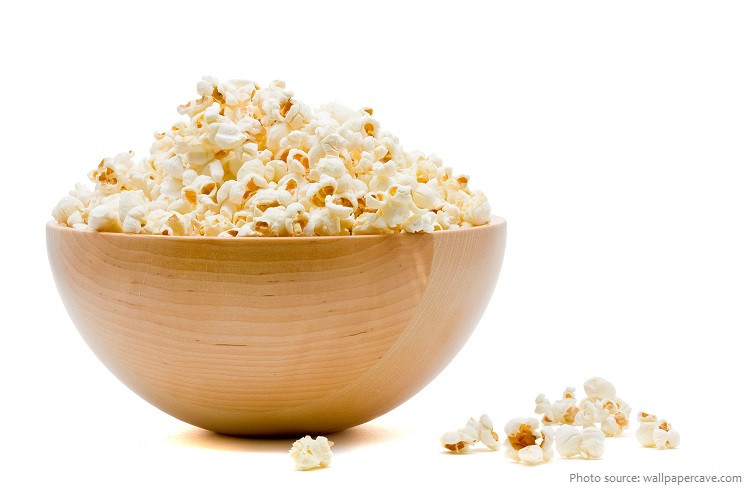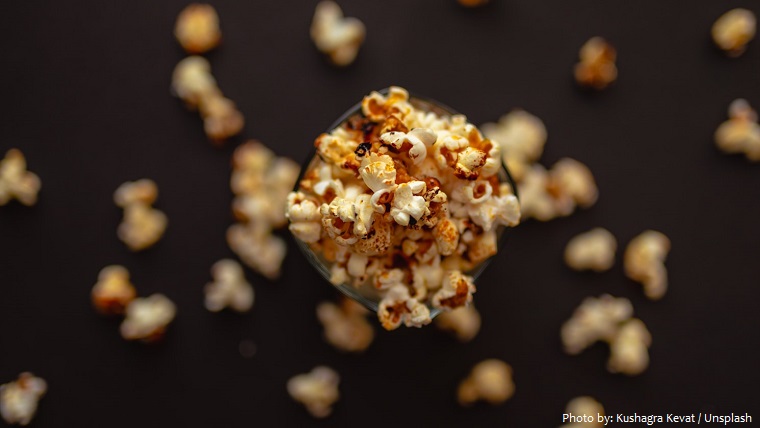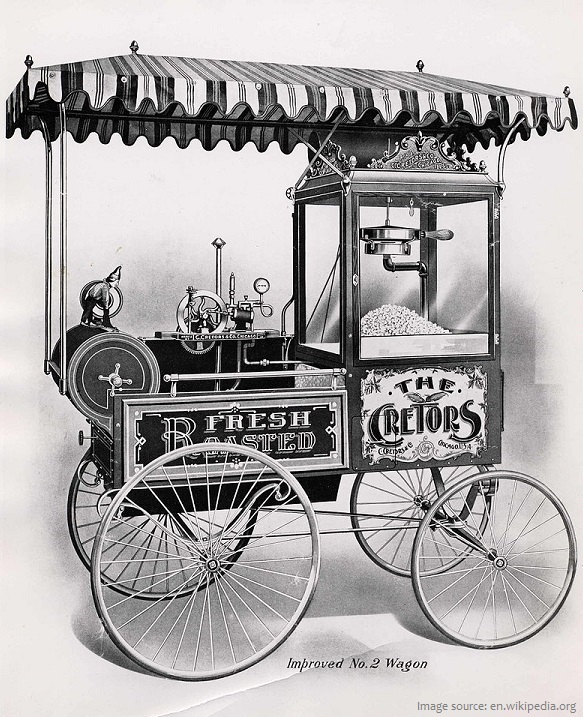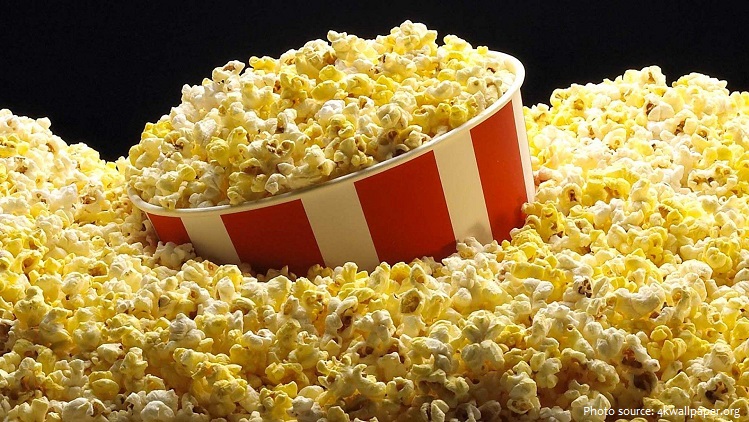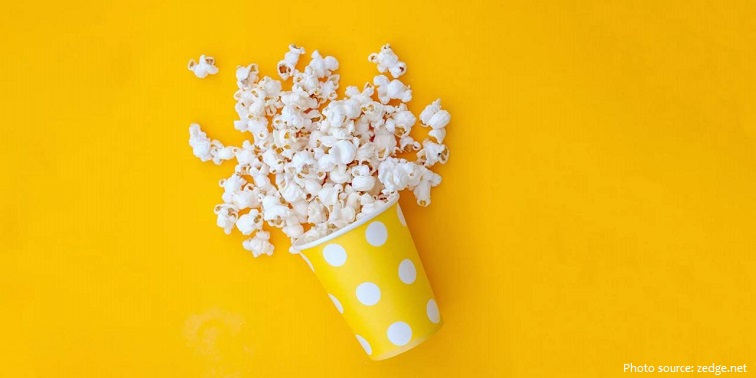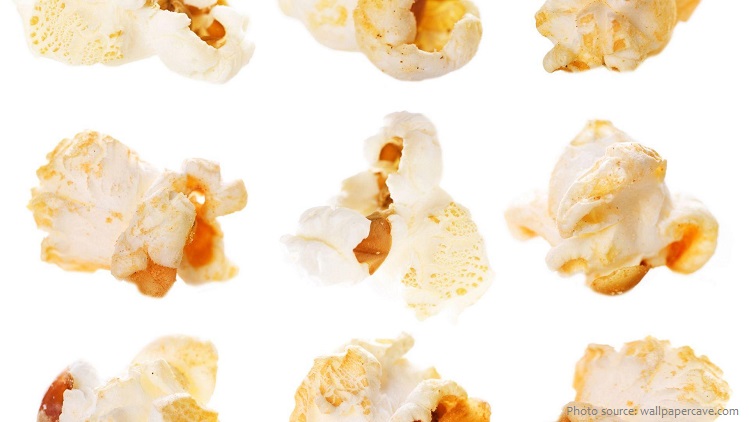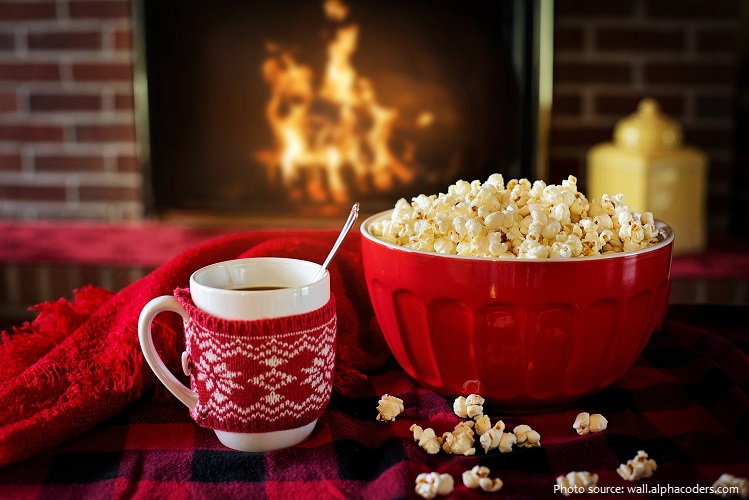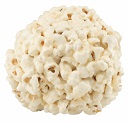Popcorn is a variety of corn kernel which expands and puffs up when heated and the foodstuff produced from the expansion.
A popcorn kernel’s strong hull contains the seed’s hard, starchy shell endosperm with 14 to 20% moisture.
When such kernels are heated to about 200 °C (about 400 °F), the moisture in the starch turns into steam and builds up pressure until the kernel explodes inside out into a white fluffy, irregular mass, about 20 to 40 times the original size.
When the seed shell breaks a sharp noise is made. The name “pop” is because of this noise.
Half the fun of popcorn is watching it turn from a hard, little yellow seed into a white fluffy treat. Few foods take such a dramatic turn as popcorn does while it’s cooking.
For centuries people have been fascinated by popcorn.
Popcorn is native to the Western Hemisphere.
Archaeologists discovered that people have known about popcorn for thousands of years.
In Mexico, for example, remnants of popcorn have been found that date to around 3600 BC.
The first European explorers of the New World described the toasting of popcorn by the Indians for food, for scattering in religious ceremonies, and for wearing as decoration in the hair.
Popping of the kernels was achieved by hand on the stove-top through the 19th century.
Charles Cretors, founder of C. Cretors and Company in Chicago, introduced the world’s first mobile popcorn machine at the World’s Columbian Exposition in Chicago in 1893.
Although popcorn is typically thought of as a snack food today, popcorn was once a popular breakfast food. Ahead of its time and very likely a role model for breakfast cereals to come, during the late 19th and early 20th centuries, popcorn was eaten just as we eat cereal today.
During the Great Depression, popcorn was fairly inexpensive at 5–10 cents a bag and became popular. Thus, while other businesses failed, the popcorn business thrived and became a source of income for many struggling farmers, including the Redenbacher family, namesake of the famous popcorn brand.
In 1938 a Midwestern theater owner named Glen W. Dickinson Sr. installed popcorn machines in the lobbies of his theaters. Popcorn was making more profit than theater tickets. At the suggestion of his production consultant, R. Ray Aden, he purchased popcorn farms and was able to keep the ticket prices down. The venture was a financial success, and the trend to serve popcorn soon spread.
During World War II, sugar rations diminished candy production, and Americans compensated by eating three times as much popcorn as they had before.
Popcorn went into a slump during the early 1950s, when television became popular. Attendance at movie theaters dropped and with it, popcorn consumption. When the public began eating popcorn at home, the new relationship between television and popcorn led to a resurgence in popularity.
In the early 1980’s, microwave popcorn was born into the popcorn family and home popcorn consumption increased by tens of thousands of pounds in the years following.
Today, the United States grows almost all the world’s popcorn.
Americans today consume 14 billion quarts of popped popcorn each year.
The average American eats about 43 quarts.
According to The Popcorn Institute, approximately 70 percent is eaten in the home (home popped and pre-popped) and about 30 percent outside the home (theaters, stadiums, schools, etc.).
As a snack food, popcorn is commonly buttered and salted. It may instead be glazed with variously flavoured and coloured candy syrups that harden, or be mixed with peanuts or almonds, or be coated with melted cheese.
Popcorn is one of the most wholesome and economical foods available.
In the popcorn industry, a popped kernel of corn is known as a “flake”. Two shapes of flakes are commercially important. “Butterfly” or “snowflake” – flakes are irregular in shape and have a number of protruding “wings”. “Mushroom” – flakes are largely ball-shaped, with few wings.
Major popcorn producing states are Illinois, Indiana, Iowa, Kansas, Kentucky, Michigan, Missouri, Nebraska and Ohio.
Since 2004, popcorn has been the official state snack in Illinois.
Berco’s Billion Dollar Popcorn is the world’s most expensive popcorn. It cost $100 for a quart and $1.000 for 6.5 gallons. Made of the finest ingredients collected from around the world, the most expensive popcorn is made of organic sugar for caramel, Vermont Creamery, Laeso which is the world’s most expensive salt, Nielsen Massey Bourbon Vanilla and 23-karat edible gold flakes.
The largest box of popcorn was achieved by Cineplexx (International) with a volume of 52.59 cubic meters (1857 cubic feet), which was filled in 1 hour and 57 minutes at an event outside Avenue Mall in Osijek, Croatia, on 16 April 2011. The event was organised by Cineplexx (International) to celebrate the opening of two new Malls, complete with two new Cineplexx cinema’s in Croatia.
The largest popcorn ball weighed 1,552.64 kg (3,423 lb) and was made by employees at The Popcorn Factory, Lake Forest, Illinois, USA on 29 September 2006.
The largest popcorn sculpture measured 6.35 meters (20 ft 10 in) tall, 3.88 meters (12 ft 9 in) wide and weighed 5,301.59 kg (11,688 lb). It was created by 50 members of the Sri Chinmoy Centre in Jamaica, New York, United States on 27 August 2006. The sculpture was of a 5 tiered cake. The width provided above is the diameter of the largest tier.

